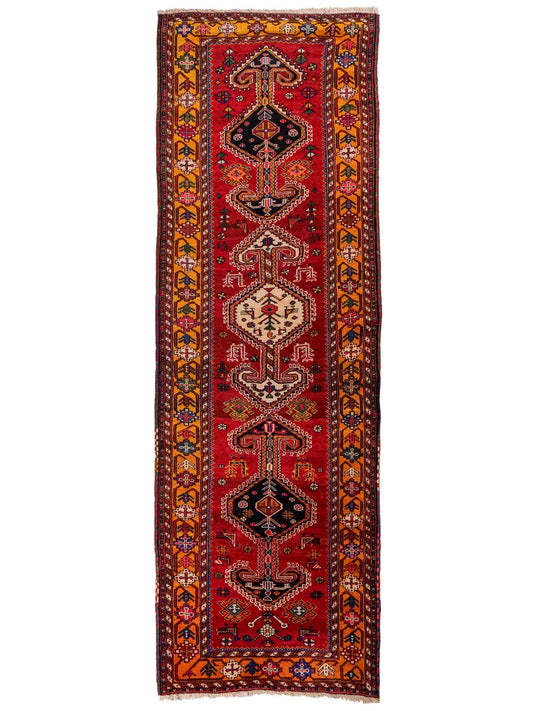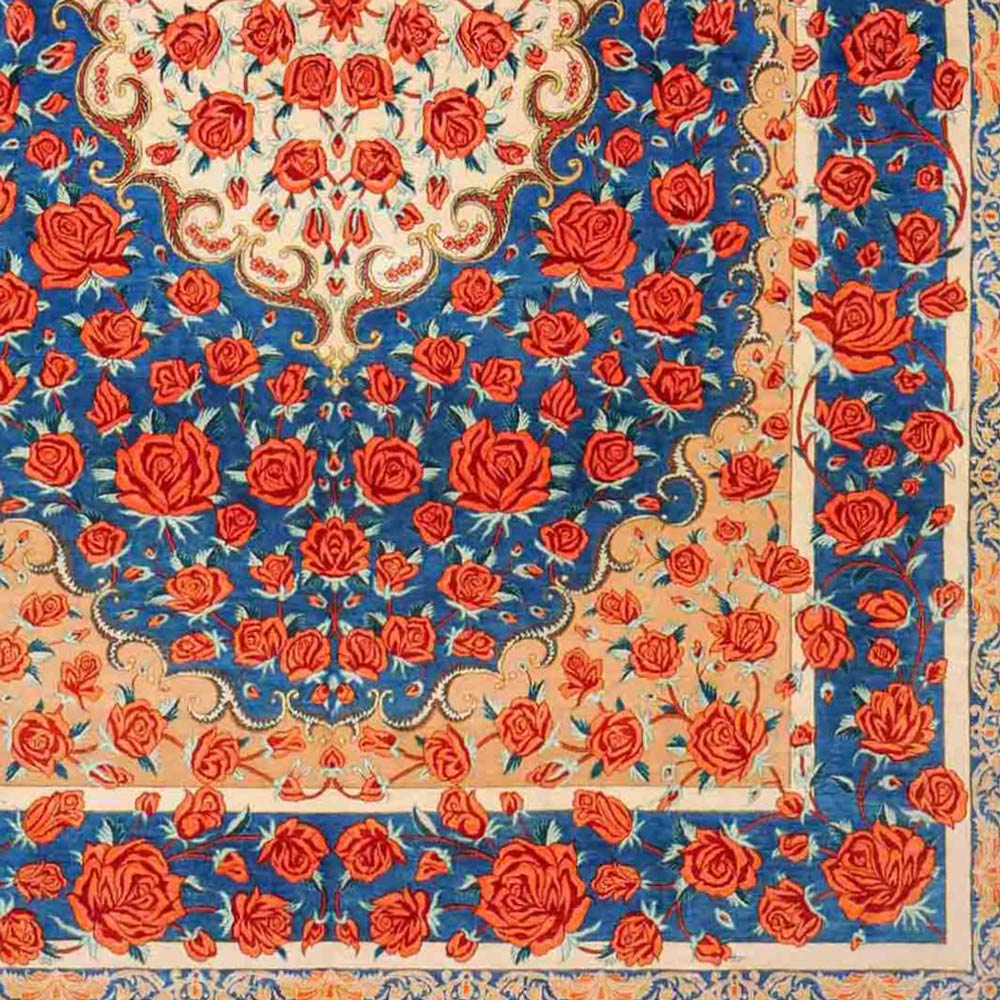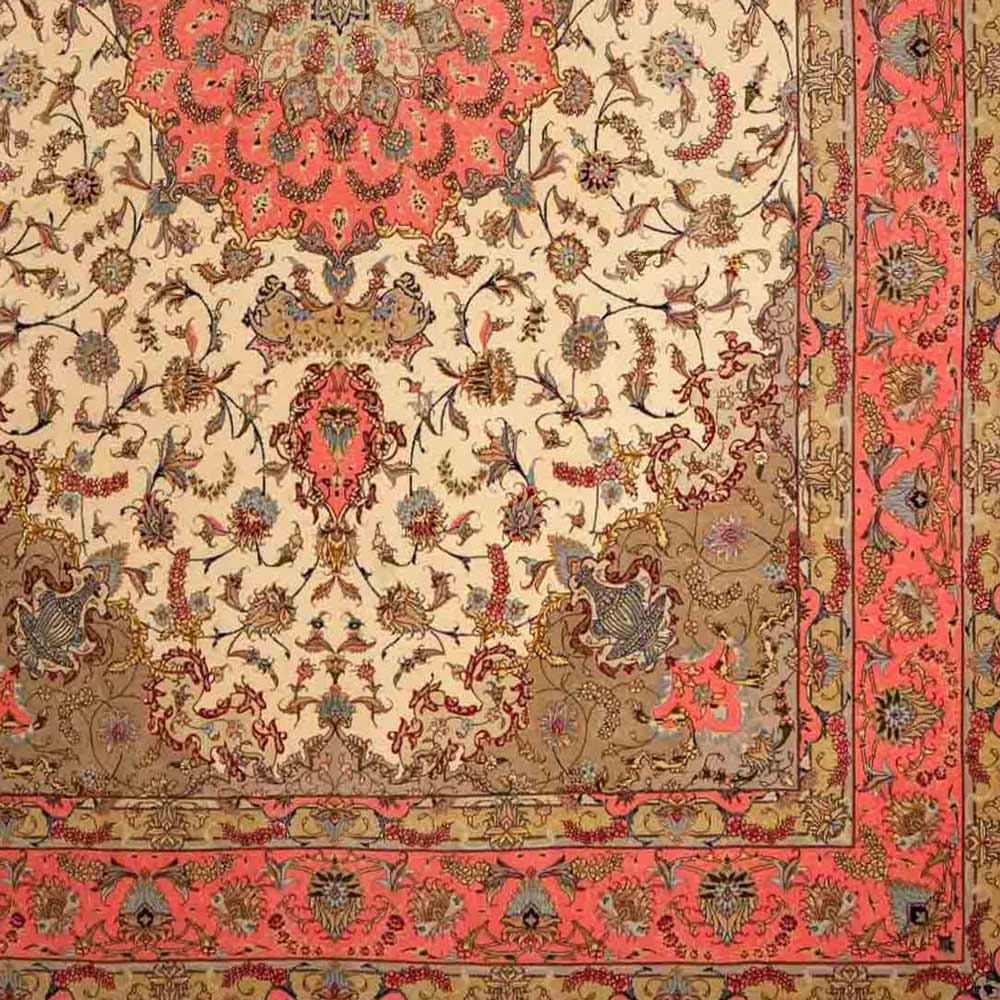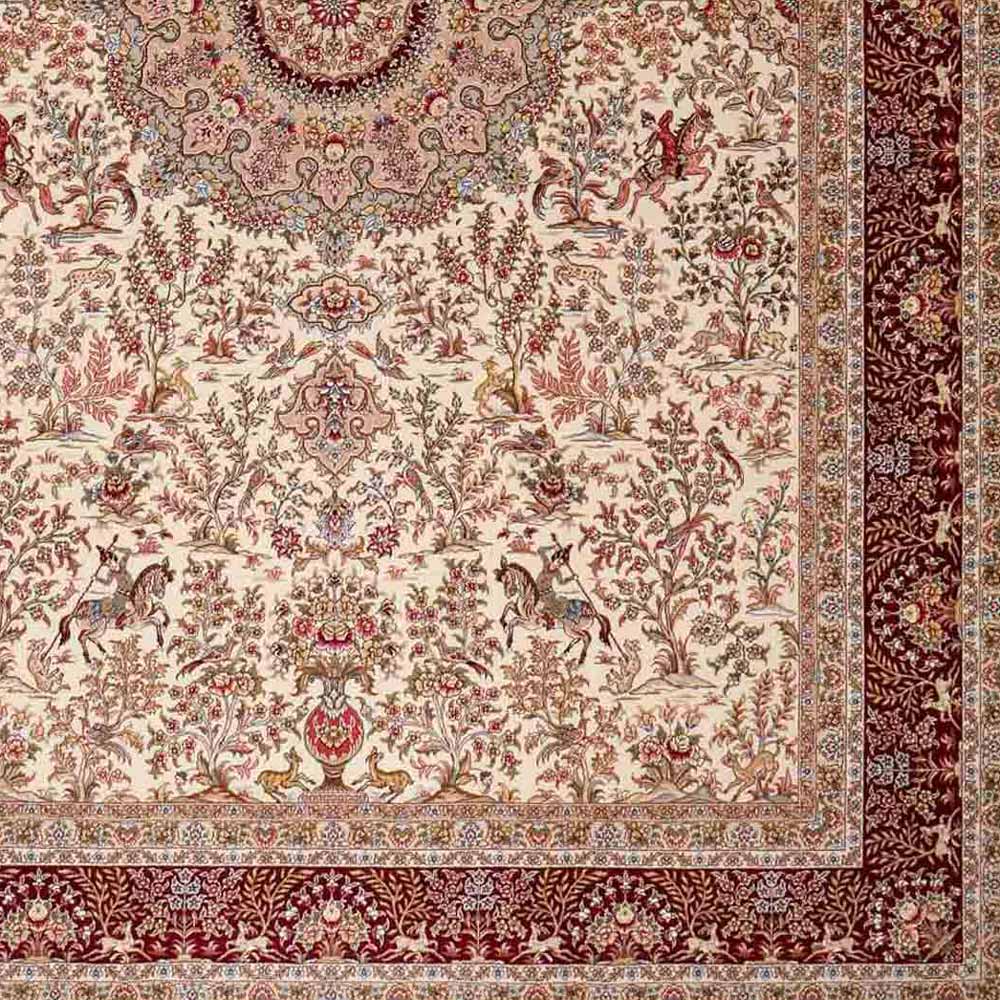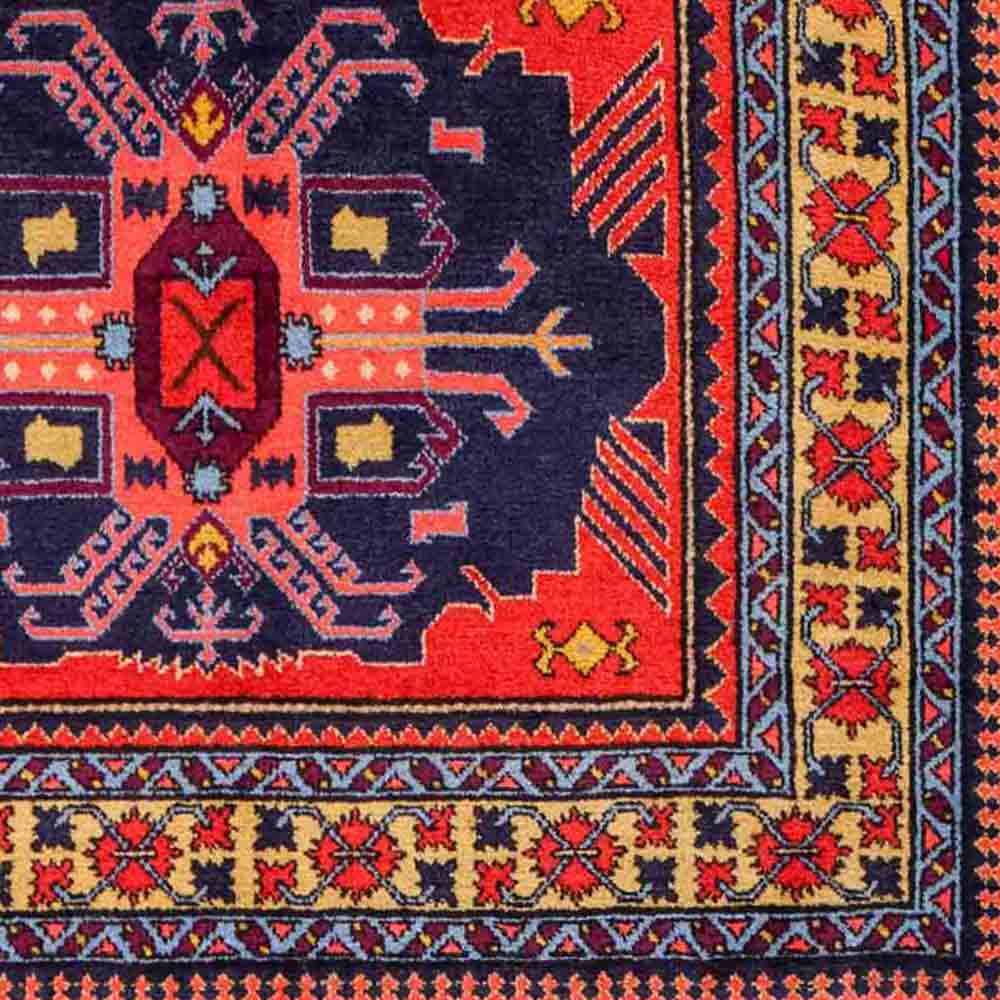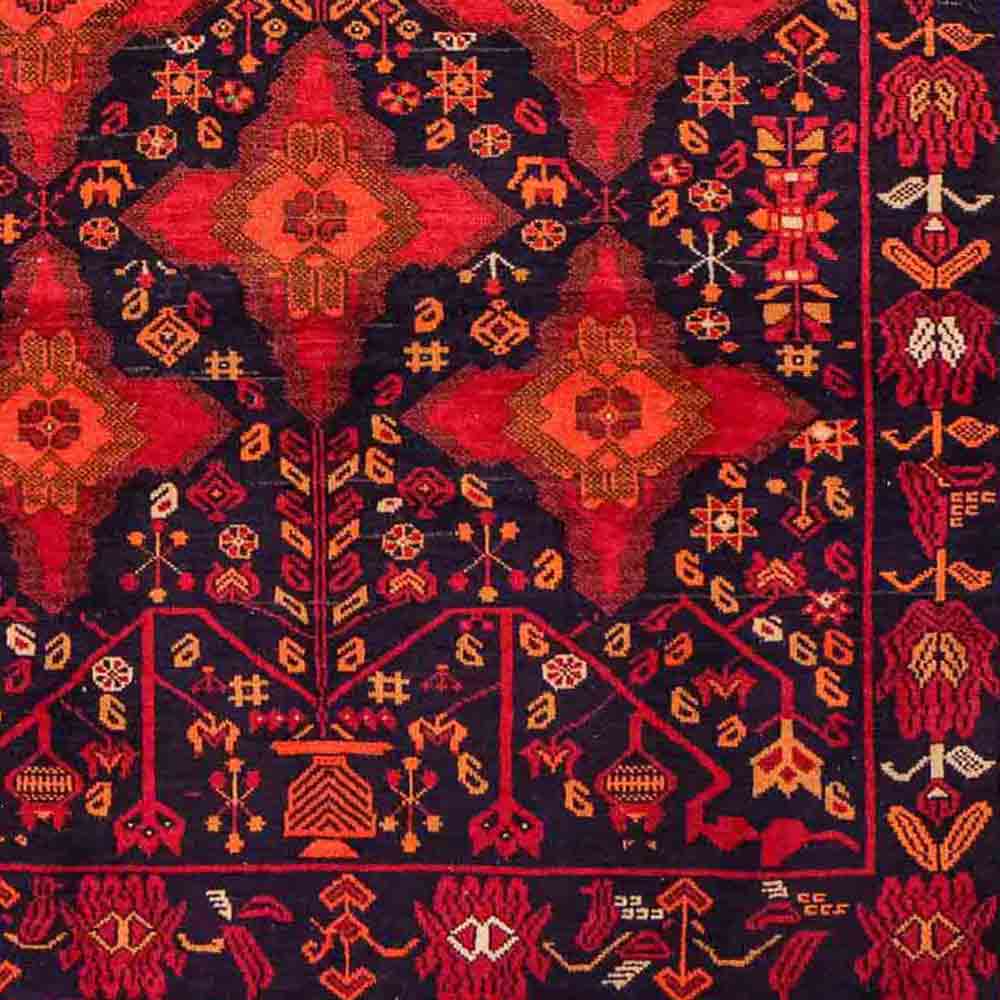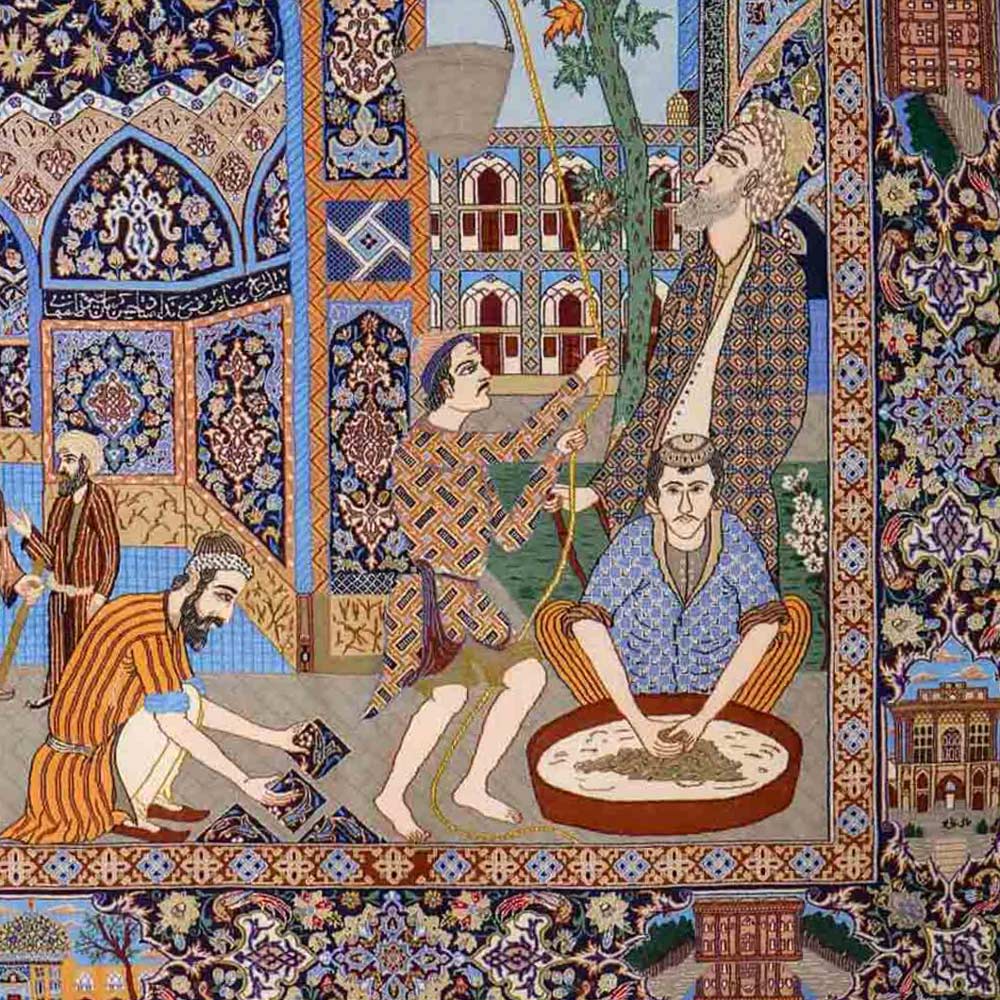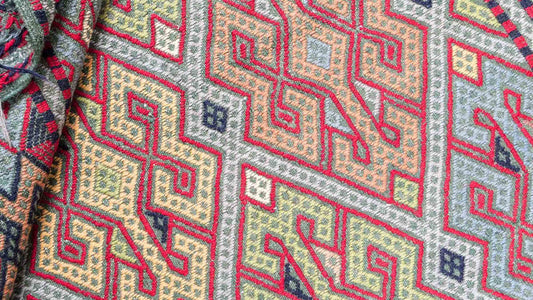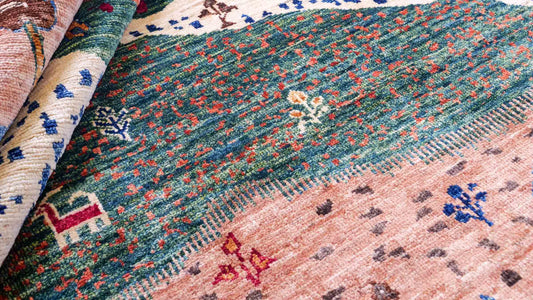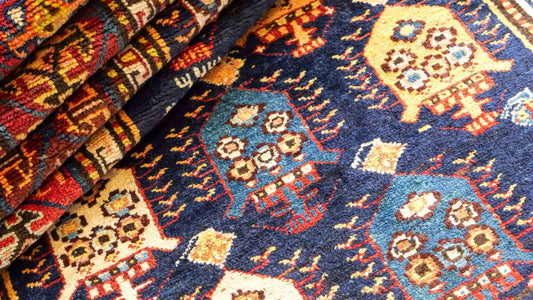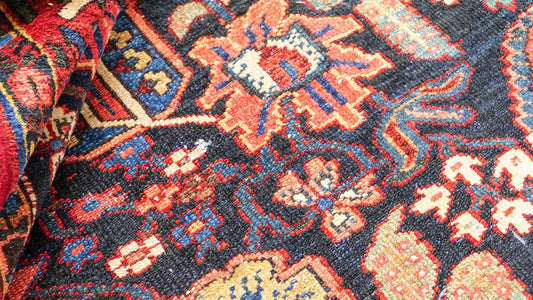
Shiraz
Daniel KhademiShiraz rugs embody Persian tradition, creative variety, and superb craftsmanship. Their patterns reflect nature, history, and nomadic life—each piece telling a story of Persian culture. Discover why an authentic Shiraz rug can enrich your home, what to look for when purchasing, and how to find the perfect original for your interior.
Shiraz Rugs: Key Facts at a Glance
- Origin: City and region of Shiraz, southern Iran, Fars Province
- Material: High-quality wool, sometimes silk, predominantly plant-based dyes
- Design/Pattern: Geometric motifs, tribal & floral designs, folkloric scenes, medallions
- Knotting: Hand-knotted, typically 120,000–600,000 knots/m², robust and detailed
- Character: Expressive, versatile, steeped in tradition; regional variations
- Care: Durable with proper maintenance; quality across generations
- Value: Cultural asset & investment piece, high collector demand for rare examples
- Best suited for: Living room, dining area, bedroom, home office, hallway—works with both classic & modern interiors
Discover Shiraz Rugs in our shop or request personal advice to find your ideal original!
Geography, History & Significance
The Birthplace of Shiraz Rugs
The city of Shiraz in southern Iran is, in many ways, a cultural and historical heartland. Located in Fars Province, the region is blessed with fertile soils and a pleasant climate—ideal for sheep farming, which underpins high-quality wool production for rug weaving. Surrounded by the Zard Kuh and Elyas mountains, Shiraz not only enjoys stunning scenery but also the perfect conditions for producing wool, one of the core ingredients for its rug making tradition.
Geographic features here shape not only agricultural potential but also the cultural and stylistic evolution of the region’s carpets. Close contact with diverse cultures—from nomadic tribes in the surrounding areas to urban centers—has resulted in a wealth of artistic movements, clearly visible in the designs and techniques of Shiraz rugs.
Shiraz Rugs Through the Ages
The roots of carpet weaving in Shiraz trace back as far as the 16th century. During the Qajar dynasty (1789–1925), rug making flourished, with the upper classes deeply valuing art and artisanship. Many of the classic designs and knotting techniques that define Shiraz rugs today originated in this period.
The spread of the rug trade in the 19th century put Shiraz rugs on the international stage. Trade routes were established to export these carpets around the world. This era brought new patterns and colorways, drawing on influences ranging from the Ottoman Empire to European powers.
Thanks to oral traditions and the dedication of the region’s craftspeople, techniques and motifs have been preserved across generations. Many rug makers in Shiraz still work in family workshops—some maintaining their expertise for hundreds of years. This continuity has given Shiraz rugs a distinctive identity that sets them apart within Iran.
Cultural Significance of Shiraz Rugs
Shiraz is also famed for its literary and artistic traditions that have strongly influenced its rugs. The city is the birthplace of celebrated poets like Hafez and Saadi, whose works often explore themes of love, nature, and spirituality—ideals subtly woven into the rugs’ designs. Through their motifs and colors, these carpets serve as artistic mediums, capturing the deep emotions and stories of the region.
Manufacturing & Sustainability
Hand-Knotted Works of Art
The creation of a Shiraz rug involves multiple steps. Wool is first sheared from sheep raised in the mountains around Shiraz. The raw fleece is then cleaned and dyed—most often with natural dyes derived from local plants, fruits, or minerals. These eco-friendly techniques guarantee long-lasting, vibrant color.
Next comes the knotting, a process that calls for tremendous skill and patience. On a loom, rows of knots in wool or silk are precisely inserted to create complex designs. Knot density is a key quality indicator: in Shiraz rugs, it typically ranges from 120,000 up to 600,000 knots per square meter. Higher densities mean finer detail and better quality. Depending on size and complexity, weaving can take anywhere from several months to years.
Buying Responsibly
As awareness of sustainability grows, it’s important to seek out Shiraz rugs made with ethical sourcing and production methods. Invest in carpets from responsible origins and artisans who receive fair wages. This supports not only the art of weaving but also local communities and the preservation of traditional techniques. Certifications or membership in trade organizations can signal a responsible purchase. Learn more about sustainability here: *How Sustainable Are Hand-Knotted Rugs?*
Motifs, Designs & Colors of Shiraz Rugs
One defining trait of Shiraz rugs is their vast array of designs and colors. Typical motifs include geometric shapes, floral decorations, and folkloric scenes, often inspired by regional nature or the lifestyle of local nomads. Color palettes range from rich reds to soft blues and greens and deep earthy hues. Such harmonious variety makes it easy to find a rug for virtually any décor—from modern to classic interiors.
The Perfect Choice: Shiraz Rug Selection Tips
Shiraz rugs stand out for their versatility and suit numerous living spaces. In the living room, they become a visual focal point and create a warm, welcoming ambiance—whatever your style, from modern and Scandinavian to classic or boho. In the dining room, they add homely elegance and pair especially well with rustic or oriental-inspired décor. In home offices, Shiraz rugs provide creative-modern flair, while in foyers they offer guests a stylish, warm welcome. In bedrooms, these rugs create comfort and add cozy accents underfoot.
Key Criteria at a Glance:
- Measure your space: Large rugs anchor expansive rooms as bold centerpieces; in small areas, choose the right size to avoid overcrowding.
- Consider knot density: Higher knot counts deliver finer details and better quality.
- Pick your material: Premium wool is robust and long-lasting; silk adds a luxurious sheen—choose wool for high-traffic zones.
- Ponder the use: Opt for resilient rugs in busy spaces like hallways or dining rooms.
- Select a fitting design: Geometric motifs, vibrant colors, or subtle nature tones all harmonize with a range of styles—modern, Scandinavian, vintage, classic, or boho.
- Color coordination: The rug’s palette should complement your furniture and décor for a coherent, inviting space.
Popular Nomadic Rugs Compared: Bakhtiar · Ghashghai · Lori · Shiraz
| Criteria | Bakhtiar | Ghashghai | Lori | Shiraz |
| Origin | Western Iran (Isfahan, Chahar Mahal) | Southwest Iran (Fars) | Southwest Iran (Luristan) | Southern Iran (Fars, Shiraz) |
| Material | Wool, cotton warp | Wool, cotton warp | Wool, cotton warp | Wool, cotton warp |
| Knot Density | 120,000–300,000 knots/m² | 80,000–300,000 knots/m² | 100,000–300,000 knots/m² | 150,000–600,000 knots/m² |
| Design | Garden & field motifs, medallions, floral | Tribal, diamonds, animal/flower motifs | Primitive geometry, tribal styles | Geometric, floral, tribal, figural |
| Color Palette | Vivid contrasts: red, blue, green | Rich red, blue, yellow, natural | Earthy tones, red, brown, orange | Red, blue, green, earth tones |
| Character | Distinctive, decorative, substantial | Tribal, lively, expressive | Down-to-earth, robust | Expressive, creative |
| Special Features | Iconic garden and field patterns, nomadic origin | Very expressive tribal rugs | Especially sturdy nomadic rugs | Diverse, nomadic pattern variety |
| Value/Price Range | Mid to high | Entry to mid-range | Entry, very solid quality | Mid to high |
Checklist: How to Spot Authentic Shiraz Rugs
- Provenance or certificate from a reputable dealer ✔
- Dense wool, substantial feel, slightly matte finish ✔
- Hand-knotted details—minor irregularities as a mark of authenticity ✔
- Geometric motifs, medallion, stylized animal or plant motifs ✔
- Intense, harmonious colors (often red/blue/green dominant) ✔
- Neatly finished fringes, pattern clearly visible on the back ✔
Caring for Your Shiraz Rug
How to Keep Your Shiraz Beautiful for Generations:
- Vacuum regularly; do not beat or shake
- Blot stains immediately with lukewarm water & a clean cloth
- Avoid direct sunlight
- Professional cleaning every 1–2 years is recommended
- For more detailed advice, visit our blog post: *How to Care for Hand-Knotted Rugs*
Value & Investment: A Unique Piece for Life
Shiraz rugs offer outstanding value for money. For a surprisingly modest sum, you’ll receive not just a hand-knotted original but an exceptionally robust, quality product that will bring you joy for years, growing in character over time. While they generally sit in the lower to mid-price range and their appreciation is not guaranteed, they’re cherished by buyers worldwide. Each purchase also supports the region’s local economy and helps preserve its rich cultural heritage.
► For in-depth advice, tips & tricks, see our blog post: *Are Hand-Knotted Rugs a Good Investment?*
Request a free personal style or purchasing consultation for Shiraz rugs today!
FAQ – Frequently Asked Questions about Shiraz Rugs
What distinguishes Shiraz rugs?
Versatile, creative designs, deep colors, ancient traditions, and regional influences—every Shiraz rug tells a unique story.
How can I recognize a genuine Shiraz rug?
Proof of authenticity, density of the weave, hand-knotted details, characteristic motifs and the absence of machine-like perfection.
How do I care for a Shiraz rug?
► Gently vacuum, treat stains immediately, avoid sun exposure, and have professionally cleaned every 1–2 years. For more detailed advice, visit our blog post: *How to Care for Hand-Knotted Rugs*
Are Shiraz rugs a good investment?
► Originals with proven provenance and unique designs are always in demand and tend to hold their value. —read more in our guide: *Are Hand-Knotted Rugs a Good Investment?*
Where can I buy genuine Shiraz rugs?
► The best sources are specialist dealers or trusted online shops. At JUPITER Intl, every hand-knotted, hand-tufted, and handwoven rug comes with a Certificate of Authenticity.
Conclusion: A True Asset to Your Home
In summary, Shiraz rugs are not only beautiful additions to your space, but powerful witnesses to a rich cultural tradition. With an authentic Shiraz, you bring more than a decorative highlight into your home: you invest in a piece of art and history—responsibly crafted and full of meaning. Choosing a Shiraz rug is about more than just style; it’s about valuing tradition, craftsmanship, and sustainable consumption. Step into the world of Shiraz rugs and find the perfect piece to make your home shine.
Request your personal consultation or explore our current Shiraz Collection now!
Related blogs & blog posts you might also be interested in:
→ Design Classics, Countries of Origin, Carpet Materials, Carpet Guide

